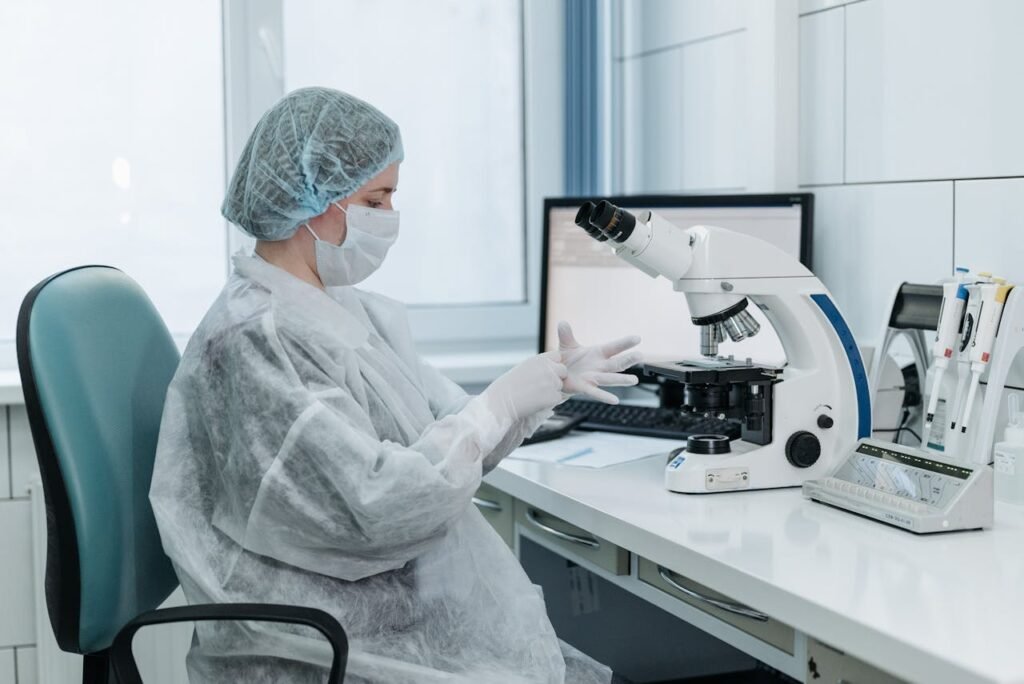Artificial insemination has gained popularity among individuals and couples in the United States as an option for addressing fertility issues or growing their families further. Exploring the details of artificial insemination in the USA can assist parents in making well-informed choices regarding this medical procedure. This piece delves into the complexities of artificial insemination in the USA, providing insight into the process and potential results for readers.
Table of Contents
Understanding Artificial Insemination
Using artificial insemination means introducing sperm into a woman’s system using unconventional methods to help those facing fertility challenges conceive more successfully. Two main techniques are available: intracervical insemination (ICI), where sperm is placed on the cervix directly, and intrauterine insemination (IUI), which involves inserting it into the uterus to enhance the likelihood of success.
Reasons for Choosing Artificial Insemination
People opt for artificial insemination (AI) because it is conceived as a fertility treatment whereby sperm are introduced directly to the woman’s reproductive tract to determine good chances of conception. Different people have various reasons for opting for AI.
Infertility Issues
- Low Sperm Count: If the male partner attempts to conceive but is thwarted by a low sperm count, then introducing the sperm through AI would surely increase the odds of conception.
- Poor Sperm Quality: Altered motility or morphology can hinder natural conception, as such cases would encourage resorting to AI.
Lifestyle Choices
- Single Parents: The use of donor sperm for AI permits individuals to conceive a child without a partner.
- Same-Sex Couples: Same-sex couples can easily utilize donor or partner sperm for artificial insemination.
Other Reasons
- Genetic Disorders: This applies to the transmission of a genetic disorder to male offspring with the present genetic disorder in their male partner’s offspring.
- Age-Related Decline of Fertility: The possibility of having children declines with the advancing age of women; AI may help to increase the chances of conception.
Preparing for the Procedure
Artificial Insemination (AI) is a fertility treatment that involves introducing sperm into a woman’s reproductive tract to facilitate fertilization. If you’re considering AI, here’s a comprehensive guide to help you prepare for the process.
Initial Consultation and Medical Evaluation
- Consult a Fertility Specialist: The first step is to consult with a fertility specialist. They will discuss your medical history, lifestyle factors, and any underlying fertility issues.
- Medical Tests: Your doctor may recommend several tests to assess your fertility:
- Hormone Testing: To evaluate hormone levels and identify any imbalances.
- Ultrasound: To examine the reproductive organs and track ovulation.
- Semen Analysis: To assess sperm count, motility, and morphology.
Lifestyle Modifications
Making certain lifestyle changes can significantly improve fertility:
- Healthy Diet: A balanced diet rich in fruits, vegetables, and whole grains can enhance overall health and fertility.
- Regular Exercise: Moderate physical activity can boost fertility.
- Stress Management: Practice stress-reduction techniques like yoga, meditation, or deep breathing.
- Avoid Harmful Substances: Limit alcohol consumption and avoid smoking to improve fertility.
- Maintain a Healthy Weight: Being overweight or underweight can affect fertility. Aim for a healthy BMI.
Timing the Procedure
- Tracking Ovulation: Accurate ovulation tracking is crucial for timing the AI procedure. You can use ovulation prediction kits or consult with your doctor for more precise methods.
- Scheduling the Procedure: The procedure is typically scheduled around the time of ovulation to maximize the chances of fertilization.
Selecting a Donor
For individuals and couples facing fertility challenges or seeking alternative paths to parenthood, sperm donation can be a viable option. When choosing a sperm donor, individuals may consider factors such as physical attributes, educational background, and medical history. Reputable sperm banks offer detailed donor profiles to assist in making informed decisions that align with personal preferences and family planning goals. These profiles often include information about the donor’s physical appearance, ethnicity, education, occupation, hobbies, and medical history. Some sperm banks also provide personality profiles or voice recordings to help potential parents connect with a donor who shares their values and interests.
It’s important to note that the process of selecting a sperm donor can be emotionally complex. Seeking guidance from fertility specialists and counsellors can help individuals navigate the decision-making process and address any concerns or questions they may have.
The Procedure Itself
Artificial insemination is a procedure for artificial fertilization wherein sperm are introduced into a woman’s reproductive tract to allow any of them to reach the egg for fertilization. In brief, this process takes very little time and is generally done in the clinic. The sperm is collected from the partner or a donor and fertilized, leaving behind only living sperm. This was carried out by artificial injection into the uterus with a thin and flexible catheter.
The procedure is usually quick and painless, with very little discomfort. Patients may usually return to their regular activities about that same day. Although this was a straight process, it is always wise to talk to a fertility expert to evaluate individual features for better chances for success.
Potential Outcomes and Success Rates
Artificial insemination in the USA shows potential, but success rates may differ due to factors such as age and overall health, which can impact outcomes significantly. Younger individuals tend to have better success rates. Generally speaking, intrauterine insemination (IUI) typically has a success rate ranging from 10 to 20 per cent per cycle. It may take multiple cycles before reaching the intended results.
Possible Risks and Side Effects
Artificial insemination is an overall safe procedure; however, here are some things to watch out for:
- Discomfort and Cramping: Some women might experience mild cramping or spotting post-procedure.
- Ovarian Hyperstimulation Syndrome (OHSS): If fertility medications are used to stimulate ovulation, this may lead to an OHSS in some patients. Symptoms include such conditions as abdominal pain, bloating, and nausea.
- Multiple Pregnancies: Again, it’s much less common, but there is always a slight chance of multiple pregnancies, especially in cases where more than one embryo is transferred.
These risks should be openly discussed with your healthcare provider to evaluate the advantages and disadvantages of the procedure. You can learn about those risks and the different side effects, making the necessary decisions and modifications along the way.
Emotional Considerations
Undergoing artificial insemination can be an emotionally charged experience. While it offers hope and the possibility of parenthood, it’s important to acknowledge the emotional rollercoaster that may accompany the process.
Common Emotions
- Excitement and Hope: Anticipation and optimism about the potential of parenthood.
- Anxiety and Stress: Concerns about the success of the procedure and potential setbacks.
- Sadness and Frustration: Disappointment if initial attempts are unsuccessful.
- Body Image Issues: Changes in body image due to hormone treatments or other medical interventions.
Coping Strategies
- Seek Support: Lean on loved ones, friends, or support groups for emotional support and understanding.
- Open Communication: Maintain open communication with your partner, family, or healthcare provider to express your feelings and concerns.
- Practice Self-Care: Prioritize self-care activities like yoga, meditation, or spending time in nature to reduce stress.
- Set Realistic Expectations: Understand that fertility treatments can be a lengthy process, and avoid placing excessive pressure on yourself.
- Seek Professional Help: If emotional challenges become overwhelming, consider consulting with a therapist or counsellor.
Financial Aspects
The choice to opt for artificial insemination in the USA is heavily influenced by factors such as the procedure costs, which can fluctuate depending on the clinic’s location and whether fertility medications are required. Insurance coverage can also play a role in determining the expenses involved in the process; while some plans may offer partial coverage for the treatment, others might not provide any financial assistance.
Legal and Ethical Considerations
Legal and moral factors play a role in shaping decision-making processes in the realm of assisted reproduction technologies (ART). The regulations concerning donor anonymity and parental rights differ from state to state. It is essential for individuals considering ART to be well-informed about these laws before making decisions. Ethical aspects, such as being open and honest with future offspring, are significant considerations for many involved in such processes.
Legal Considerations:
- Donor Anonymity: Laws regarding donor anonymity vary from state to state. Some states allow for open identity, while others maintain strict confidentiality.
- Parental Rights: The legal rights and responsibilities of parents, including those conceived through AI, can be complex, especially in cases involving surrogacy or donor conception.
- Child Support and Inheritance Rights: Laws regarding child support and inheritance rights may differ based on the specific circumstances of the conception.
Ethical Considerations:
- Donor Screening: Rigorous screening of sperm donors is essential to minimize the risk of genetic disorders or diseases being passed on to offspring.
- Informed Consent: Both parties involved in the process should have a clear understanding of the procedure, potential risks, and ethical implications.
- Honesty and Openness: It’s important to be honest with children conceived through AI about their origins, including the identity of the donor (if known).
- Long-Term Well-being of the Child: The emotional and psychological well-being of the child should be a primary concern.
Conclusion
Artificial insemination provides an option for individuals and couples in America seeking to become parents. The key lies in comprehending and preparing sufficiently for this procedure while taking into account well-being as well as financial and legal repercussions to ensure a well-thought-out choice. Although hurdles may arise along this path, the opportunity to realize one’s aspirations of parenthood makes it a gratifying endeavour.
For more health tips, please visit www.pumpitupmagazine.com/health
Photo by Pavel Danilyuk












